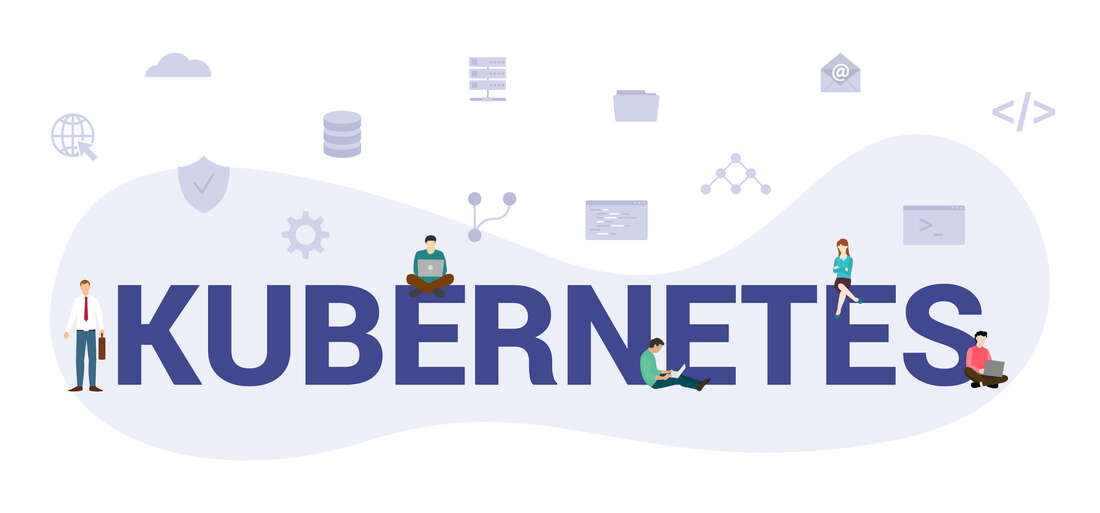|
Kubernetes is widely recognized as an open-source container orchestration tool. It handles the responsibility to maintain container management. This includes scaling and descaling of containers, container deployment, and load balancing of the containers. Your business needs Kubernetes to maintain the containers as much as it needs Docker to create them. Why Kubernetes? Generally, businesses need a large number of containers for maintaining high availability and traffic load balancing. And this number may have to be scaled up and down based on the increase and decrease in traffic. So, when the traffic increases, you need to scale up the number of containers and when the demand decreases, you need to scale down them. Docker Swarm is another tool that can be used for container management and orchestration. But, being designed by Google and having better functionality, Kubernetes remains to be a market leader. Also, Kubernetes have the capacity for Auto-scaling which makes it easier to manage. Kubernetes Objects:
The Kubernetes Platform contains control over the resources related to Storage and Compute. These resources are regarded as Objects, and it contains 8 Key objects. 1. Pods: Being a higher-level abstraction grouping containerized component, it consists of one or more containers that can co-exist on the host system and share resources. With each Pod having a unique IP Address in a particular cluster, it allows the usage of ports without any conflicts. 2. Replica Sets: At any time, it is needed to maintain a stable set of running replica Pods. This is maintained by Replica sets. Also, its purpose is to manage the availability of the required number of identical Pods. 3. Services: A Kubernetes service is defined by a set of pods that work together. These sets of pods are defined with a label selector. The service discovery can happen in two different modes, using environmental variables or Kubernetes DNS. 4. Volumes: By default, ephemeral storage will be provided by the File Systems of Kubernetes. This form of storage will remove all the data stored in such containers when the Pod is restarted. The Kubernetes Volume will provide persistent storage such that the data exists for the whole lifetime of the Pod. 5. Name Spaces: The large number of resources managed by Kubernetes are separated into multiple non-overlapping sets. These sets are referred to as Namespaces. These are generally used when a large number of users exist in the form of multiple teams or projects. 6. ConfigMaps and Secrets: Some of the Configuration Data may contain confidential information which makes the storage and maintenance of configuration information a challenge. ConfigMaps and Secrets are two mechanisms provided by Kubernetes that can deal with this problem. Both methods permit changes in the configuration without application-build. 7. Stateful Sets: Stateless applications are easier to handle in terms of scaling. Because all it needs is to add up the number of Pods. But for Stateful workloads, you need to maintain the states when the Pod is restarted, and the state may need to be redistributed for scaling. The stateful sets provided by Kubernetes are used to run stateful Applications ensuring uniqueness and ordering of the instances of a Pod. 8. Daemon Sets: Generally, Kubernetes Scheduler is responsible for deciding the location where Pods are run. It is done by the algorithm. This mode of scheduling the Pods is implemented by the feature called Daemon Sets. For your business, container management is as much needed as container creation. This is best handled by Kubernetes. And all the objects provided by the Kubernetes act as resources to fulfil its purpose. To know more about DevOps, Docker, Kubernetes or DevOps services by H-Town Technologies, visit the DevOps Services page or DevOps blogs.
0 Comments
Leave a Reply. |
Tech TalksStay up to date with the tech world and the latest trends in the industry. Archives
August 2021
Categories
All
|
|
H-Town Technologies Inc. is designed to
provide continuous and comprehensive support to all our clients in IT Consulting, Development and Managing their day-to- day business operations in the IT sector. |
|
COPYRIGHT © 2020. H-TOWN TECHNOLOGIES INC. ALL RIGHTS RESERVED.



 RSS Feed
RSS Feed
